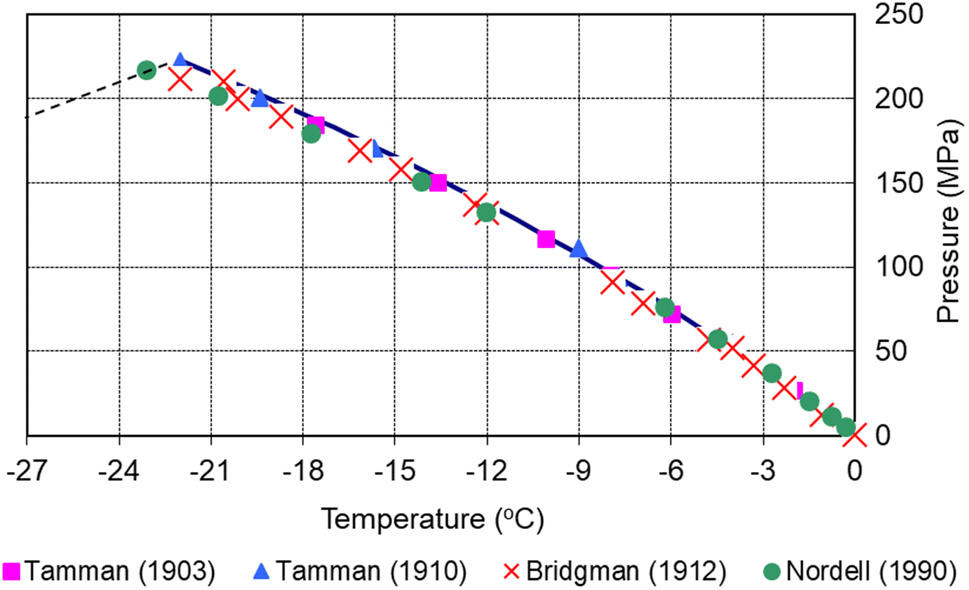So I was watching this video about the power of expanding ice; the "Action Lab" guy sealed water in a metal pipe and froze it. The expanding ice caused the pipe to explode. It was a cool video:
Water to Ice expansion creates MASSIVE pressure, like crush a submarine 100x over sort of pressure.
It set me to thinking; "Well.., geez! That's an awful lot of energy. Where does it come from?"
So I did some novice calculations (which I've written in average-joe English steps below so if you follow along you will understand rather than glaze over as with most scientific papers. I encourage you to do so in order for my thoughts to have meaning)...
Soooo... While it takes about 11 joules of energy to change water 1 degree C between liquid and frozen, doing so generates 542 joules of energy.
Melting would take another 11 joules of energy, which would drop the weight, releasing the potential energy.
Rinse & repeat.
Now.., engineering complexities aside.., (it takes some work to visualize mechanisms which could aim and capture that energy in a useful form) that seems like an absolutely massive return on energy investment. Completely out of proportion.
Is this an example of Free Energy? Extreme thermodynamic disobeyence?
Why have I never heard about this before? You'd think the magnet wheel people would be all over it.
What am I missing?
Or...
Is this an example of genuine free energy? -Which we have all apparently missed for some reason?
Water to Ice expansion creates MASSIVE pressure, like crush a submarine 100x over sort of pressure.
It set me to thinking; "Well.., geez! That's an awful lot of energy. Where does it come from?"
So I did some novice calculations (which I've written in average-joe English steps below so if you follow along you will understand rather than glaze over as with most scientific papers. I encourage you to do so in order for my thoughts to have meaning)...
-Pounds of pressure per square inch exerted by expanding ice: 43,511 lbs (19,736 Kg)
-1 inch = 2.54 cm (Converting to metric)
-Energy needed to change 1 kg of water by 1 degree Celsius = 4200 joules (To melt or to freeze, you need to move that much energy.)
-Weight of 2.54 cubic cm of water = 0.00254 Kg
(runs the math)
-2.54 cubic cm requires 10.67 joules to freeze from 1 degree Celcius to 0.
(runs more math)
-Force exerted by the expansion of 2.54 cubic cm of water freezing to ice = 19,736.26 Kg pressure
-Distance traveled (You need to know distance and time traveled to make use of work/force calculations.)
ice grows by about 9 percent from liquid = 2.8 mm (rough estimate)
-Energy required to lift 19736.26 Kg over 2.8 mm = 542 joules
Soooo... While it takes about 11 joules of energy to change water 1 degree C between liquid and frozen, doing so generates 542 joules of energy.
Melting would take another 11 joules of energy, which would drop the weight, releasing the potential energy.
Rinse & repeat.
Now.., engineering complexities aside.., (it takes some work to visualize mechanisms which could aim and capture that energy in a useful form) that seems like an absolutely massive return on energy investment. Completely out of proportion.
Is this an example of Free Energy? Extreme thermodynamic disobeyence?
Why have I never heard about this before? You'd think the magnet wheel people would be all over it.
What am I missing?
Or...
Is this an example of genuine free energy? -Which we have all apparently missed for some reason?


